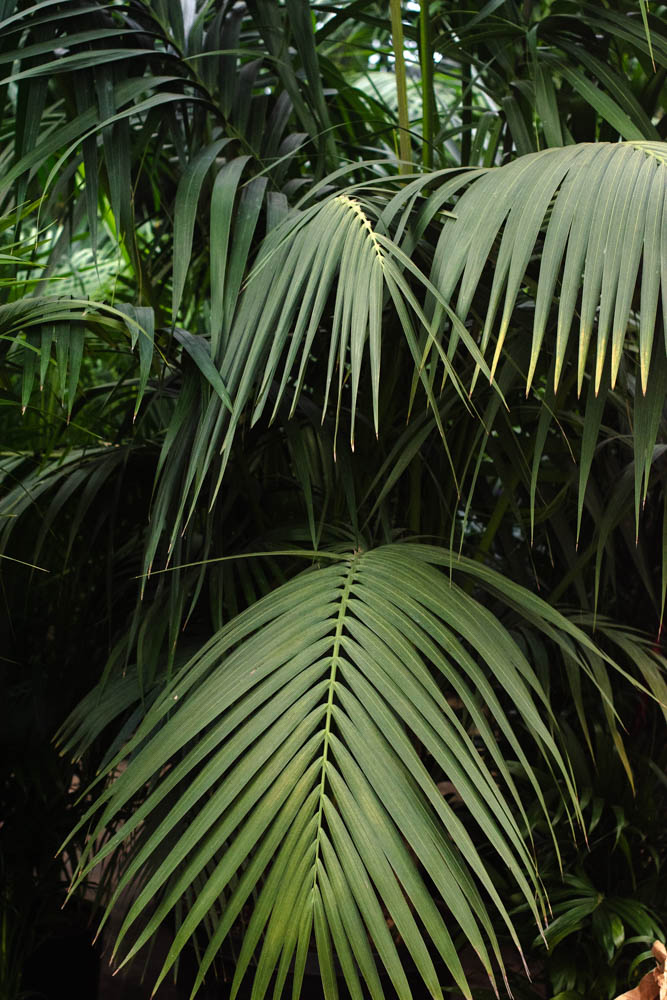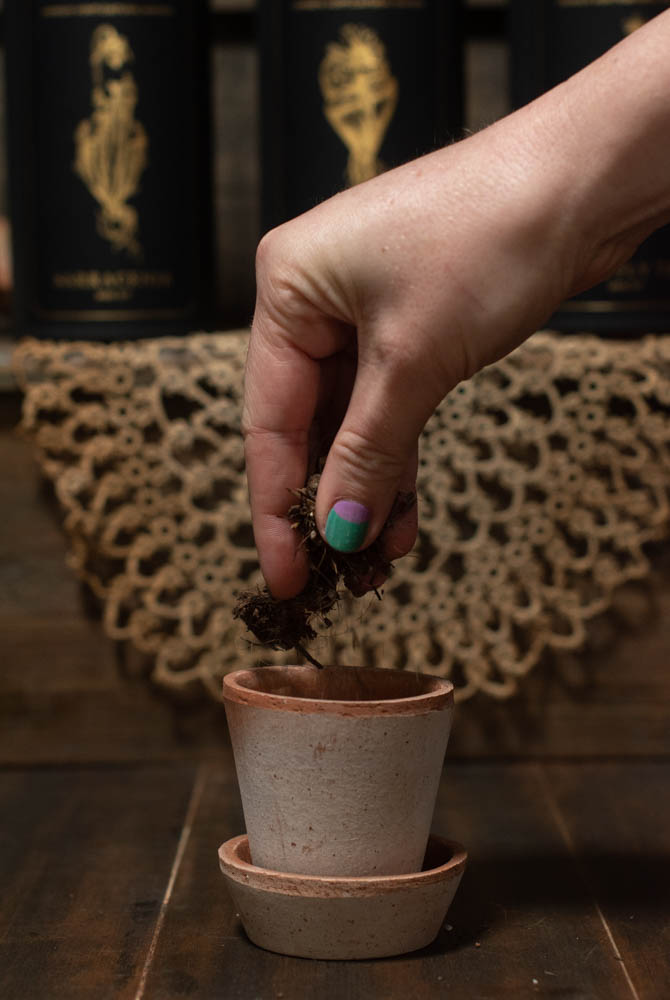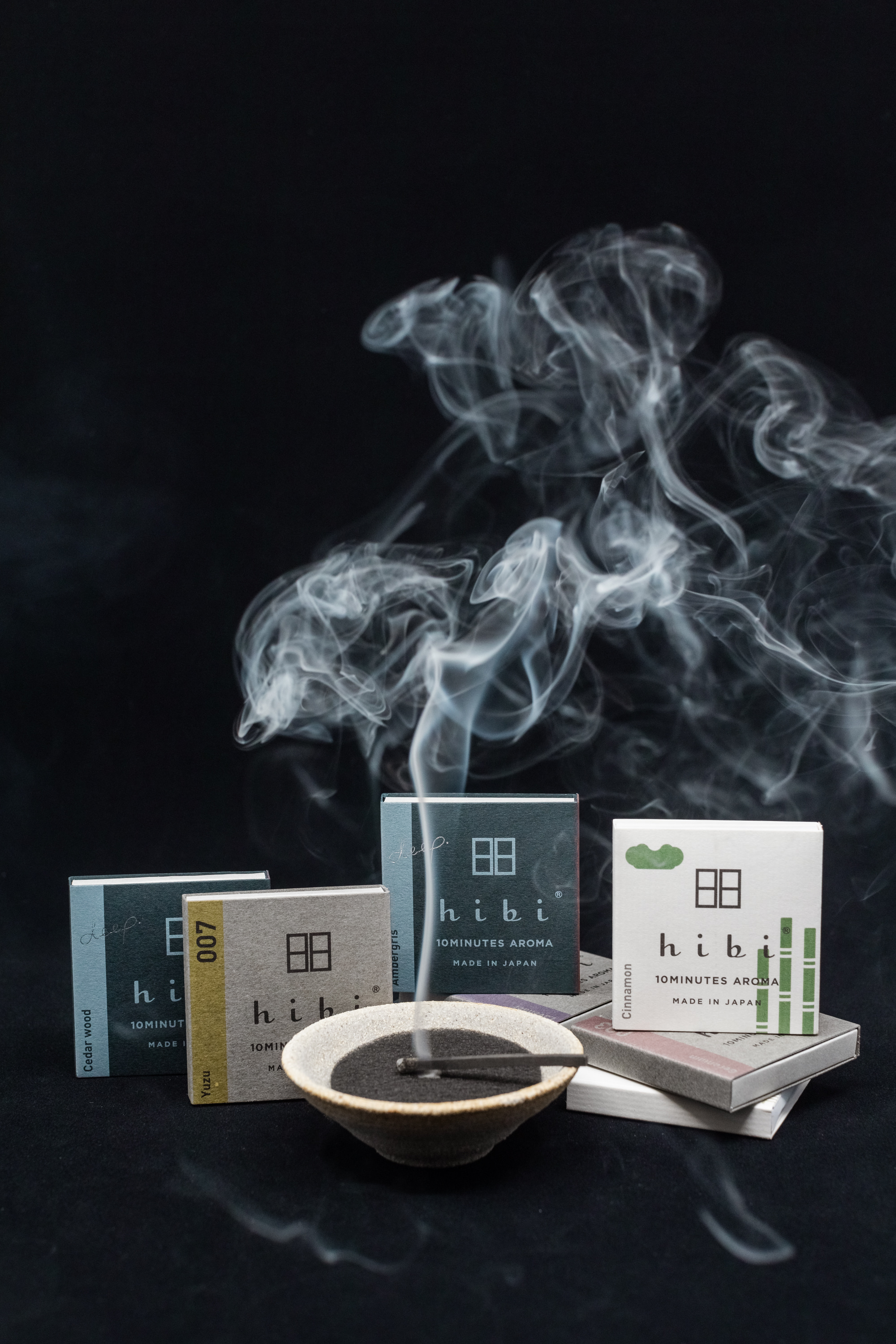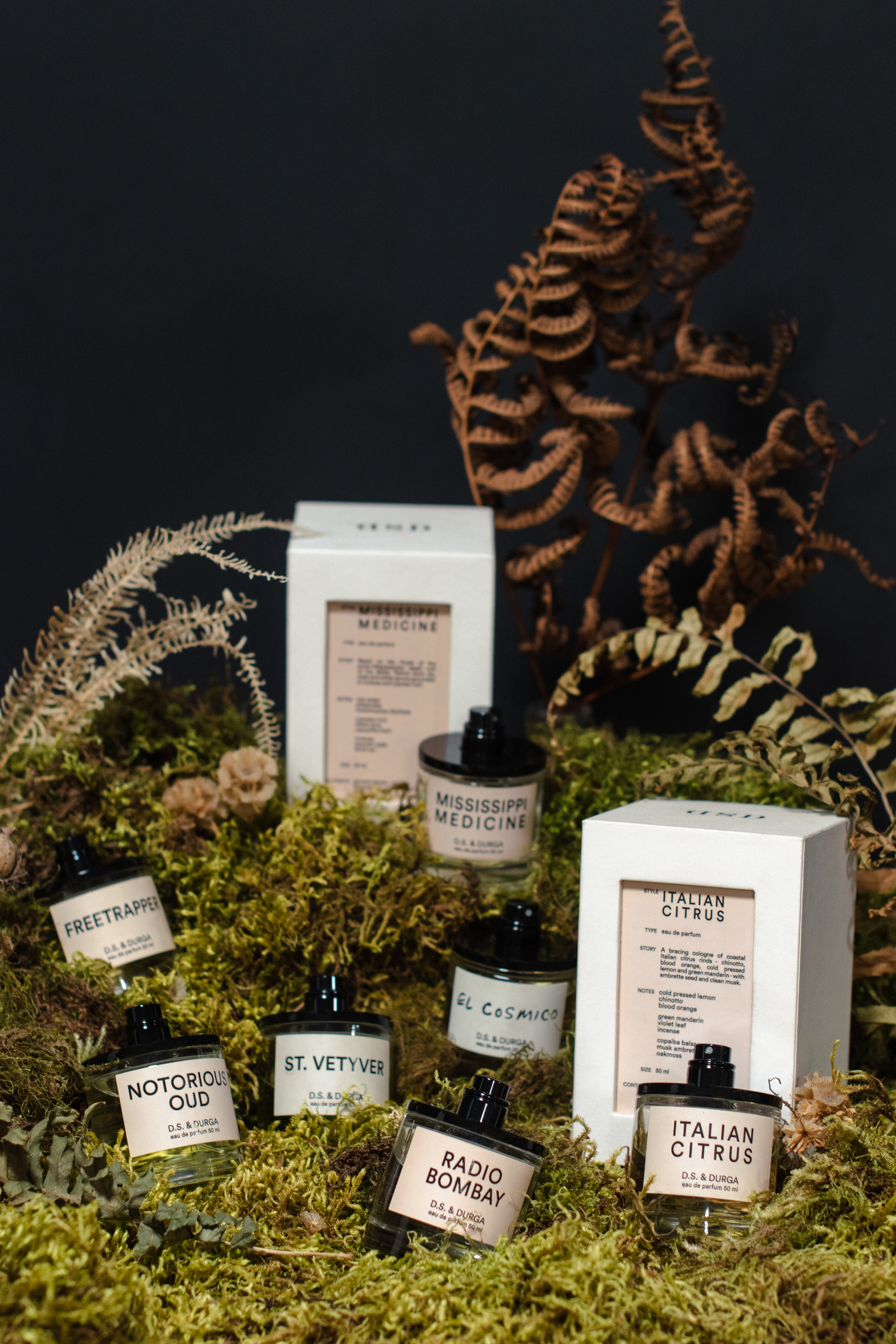Tips and Tricks for Caring for Your Plants
Plant trouble happens to the best of us. Sometimes finding what a certain plant needs to be happy, even for an experienced plant person. But when you’re trying to figure out why your plant is acting so weird, where do you start?
Being a true plant person means figuring out how to ask the right questions to get to the bottom of what is causing the problem, and learning to troubleshoot possible solutions. Armed with a few utilities in your toolbox, you’ll be prepared to identify signs of common stressers and infer what a plant needs to get back to being happy!
What to Ask
When someone comes to us for advice on how to solve their plant problems, we typically begin our investigation by asking a few questions right off the bat. We’ll examine these factors more in depth, below, but for now, here are some general questions to get asking:- How much natural lighting is your plant getting?
- What are your watering indicators? How much water are you using when you water it?
- What is the environment like in the plant’s surrounding areas? Are there any drafts that may be causin’ your plant to get chilly? Do you regularly run an air conditioner or a fan?
- What is the humidity like in your space
- What kind of planter is your plant potted in, and how long has it been in that pot? Does the pot have drainage?
Let’s dive into these questions a bit more closely and chat about how common answers may affect the health of your plant!
Let's Talk About Light
All plants need at least some form of natural light, and each plant’s lighting needs differ from family to family. Stress from too high or too low of light can often cause a plant’s foliage to change colors in some way. Unfortunately, these indicators are sometimes not as straightforward as we’d hope.
Got brown or crispy leaves? This can often be a sign that your poor little plant is getting scorched by too much direct sun. Most common houseplants are found in the understory of tropical forests in their natural environment. Therefore, these plants are unlikely to be able to tolerate hot, direct sun for extended periods of time. Plants that have delicate or papery leaves, as well as plump and tender foliage, in particular, can rarely tolerate any direct sun. Think ferns or string of pearls. While these plants prefer plenty of filtered, bright sun, they can be quite delicate when it comes to direct sunlight.
Remedying this problem is luckily pretty simple. Move your plant three to five feet away from your window, or else slant your blinds or hang a sheer curtain to diffuse those harsh UV rays. Trim off any dead or dying foliage and be patient while your plant (hopefully) bounces back!
On the flip side, is the natural lighting in your space notably dim? Are finding that your plant’s leaves are yellow and squishy, or appear limp? If you plopped yourself down to read a book where you plant lives, would you have to turn on a light in order to not strain your eyes? If so, this is a prime sign that your plant is not receiving enough natural sunlight to photosynthesize. Unfortunately, low light often goes hand-in-hand with stress from overwatering due to the soil not being able to dry out as quickly.
So, how do you fix a low light situation? The most straightforward solution is to move your ailing plant to a brighter location that doesn’t get hot, direct sun, of course. However, that may not always be possible, especially for those of us that live in an apartment that doesn’t receive sunlight from multiple angles throughout the day, or has windows that may be blocked by other buildings. If this is the case, we suggest investing in a full-spectrum light bulb or grow light strips to supplement the light in your space. Plant tech has advanced quite a bit in the past few years, which means that luckily there are quite a few inexpensive options now on the market!
If none of these options are available, you’ll need to re-examine whether this plant is a good fit for the lighting in your space, and may need to go for a more low light tolerant option, such as a zz plant, snake plant or pothos.
One thing last thing to note on the subject of watering: most plants don’t enjoy being moved often, so we don’t recommend putting your plant outside or moving to a brighter spot for a few hours a day. Allow your plant to acclimate to its environment and it will be more likely to adapt and survive than if it frequently moved around.
To Water or Not to Water
Are you testing the soil with your finger or using a moisture meter before watering? If not, there’s a good chance that your plant is not being watered with the correct frequency.
We admit: finding the right watering schedule can be tricky, especially when seasons change or we’re faced with a long spell of that unfortunate June gloom.
As mentioned above, there is often a direct correlation between how much lighting your plants get and how often you should water. For example, in the middle of summer you’re likely to experience longer days and higher temps. Therefor, your plant is going to need to be watered much more frequently. In contrast, during winter shorter days mean fewer hours of bright sun, cloudier skies, and cooler temps. During this time, your plant is likely to need water less frequently because it will be exerting less energy and therefor not drinking that water up as quickly. These colder temps will also result in less water being leached out of the soil via evaporation.
So now let’s look at some water-related troubleshooting, shall we?
Is your plant droopy with soggy or yellow leaves? Is the soil remaining moist for long periods of time without drying out? These are surefire signs that your plant is getting too much water! Move that baby to a nice, bright spot so the sunlight can help that soggy dry on out, and hold off on watering until your plant absolutely needs it. In severe cases of overwatering, you may want to repot your plant in new, dry soil. Unfortunately, overwatering is one of the more difficult ailments to fix. Your best bet is to follow the instructions above and hope for it to recover!
Alternatively, if you notice that the edges of your plant’s leaves are dry and brown, or that your plant is dropping leaves, it is likely that your plant is not getting enough water. Check the soil for signs of moisture, and if it is super dry it is definitely time to give your plant’s soil a good soak! Continue checking the soil before you water, making sure that it is appropriately dry for your plant variety. If you find that you just keep up with your plant’s desired watering schedule because the soil is drying out too quickly between waterings, this may also mean that the the plant is getting too much light, or that the roots of the plant have outgrown its current pot and that your foliage friend needs to be repotted into a larger vessel. (You can read more about repotting, here!)
Issues of Over or Under-Watering
Sometimes a plant will begin to act out despite nothing about its lighting or watering situation changing. All of a sudden you wake up one day and your plant has stopped showing regular growth, or its new foliage is smaller than the plant’s older leaves. Your plant may even start drooping or losing its lower leaves and you just can’t keep up with how frequently it needs to be watered. If you answered yes to one or all of the above, it is highly likely that it is time to repot your plant into a larger vessel!
Growth is good, but without regular repotting to accommodate for all that new foliage, a plant’s roots are going to take up much more space in the pot, meaning the plant’s potting medium isn’t going to be able to retain as much moisture. In addition, by restricting the plant’s root system from branching out, your plant is going to have difficulty absorbing enough nutrients from the soil to support itself. So, give that plant a bigger pot, why don’t you? That said, we recommend only increasing the pot size by a maximum of two inches in diameter for smallish plants (2”-6”), and a two to four inches for plants with more established root systems. That said, never buy a big pot for a plant to “grow into” - that’s a real easy way for your plant to suffer from overwatering and get root rot!
Lastly, if your plant is potted in a planter without a drainage hole, get it out of there, stat! You’re putting your plant at a serious risk of soil trouble! We never recommend pots without a drainage hole because this can simply cause way too many variables when it comes to watering. For example, while the surface of the soil may seem dry, sometimes water can get trapped beneath the roots with nowhere to go and your plant will be stricken with consistently wet feet. If your plant is potted in a planter without drainage and is dropping leaves, yellowing, or getting soggy regardless of good light and keeping to what you may think is the correct watering schedule, it is highly likely that your pot’s lack of a drainage hole is the culprit!
Environmental Temperature and Humidity
Okay, so we admit that this factor contains a bit more nuance and variation in visible indicators than other maladies. However, by taking a look at your plants
Are your leaves crisping around the edges, or curling under? It’s possible that the temperature in your space is too low, or your plant is not receiving enough humidity. Most houseplants prefer temperatures between 65 to 80 degrees, and prefer to never live in conditions colder than 55 degrees. During the winter, we keep the heater on in the shop 24/7 to keep plants happy and perky. Calatheas are especially temperature sensitive and will look droopy and tired when they’re cold. So keep those plants away from drafty windows and away from a hot, dry heater. With that said, don’t put your plant right next to a heater! The air from heaters is warm, but dry and will suck moisture out of your plant.
Which leads us to the subject of humidity…
Many houseplants also enjoy high humidity. Dry air can cause leaves to brown and crispy, much like sunburn. If the leaves on your plants are turning dry even though they’re out of direct sun, humidity may be the issue. As silly as it is, a humidifier will solve this problem. Misting can also help, but misting only increases the humidity while you’re spray the plant, not 24/7. Something to keep in mind.
Finally, the big one: Pests
Is your plant beginning to produce misshapen growth? If your plant is acting odd despite good light and watering, and the new growth doesn’t match the plant's existing foliage, it's time to inspect your plant carefully for pests. Look for fuzzy white spots along stems and where the stem and leaf meet, small raised brown dots on the leaves, raised or slightly imbedded spots like scars (small and skinny like scratches), and tiny webs on the undersides of the leaves. These are tell-tale signs that your plant may have attracted mealy bugs, scale, thrips, and spider mites.
Yeah, we know: EW, EW, EW!
First thing's first: let's get that infected plant quarantined away from your other plants! Pests can move quickly from plant to plant, causing a real funky situation.
The best way to get rid of pests is to clean the visibly infected areas with q-tips dipped in a hydrogen peroxide solution, switching out your swab between each leaf so as not to spread infection from one leaf to the next. Follow this step immediately with a neem oil solution. (We have a house solution available in store and online if you don't have any around the house.) Spray those leaves down weekly for about a month, until all visible signs of bugs have been eradicated.
Next step, let's target that infection at the source: the soil.
We swear by general Fungus Gnat and Mite Control Pellets to attack and prevent against future infection. You can sprinkle the pellets in a thin layer atop the soil, or steep them in water like tea and use when you next water your plant.
Unfortunately, sometimes a plant will be too far gone to save.
And that's okay! It's not your fault. We promise. Learning to care for plants is a constant learning process, and we gain the most valuable plant knowledge when we get that hands-on experience of troubleshooting and trial and error.
A good thing to keep in mind: our staff is always here to advise you and guide you through the plant care process! You can stop by, e-mail us or shoot us a livechat online and we'll help get to the bottom of what's goin' on!










Leave a comment